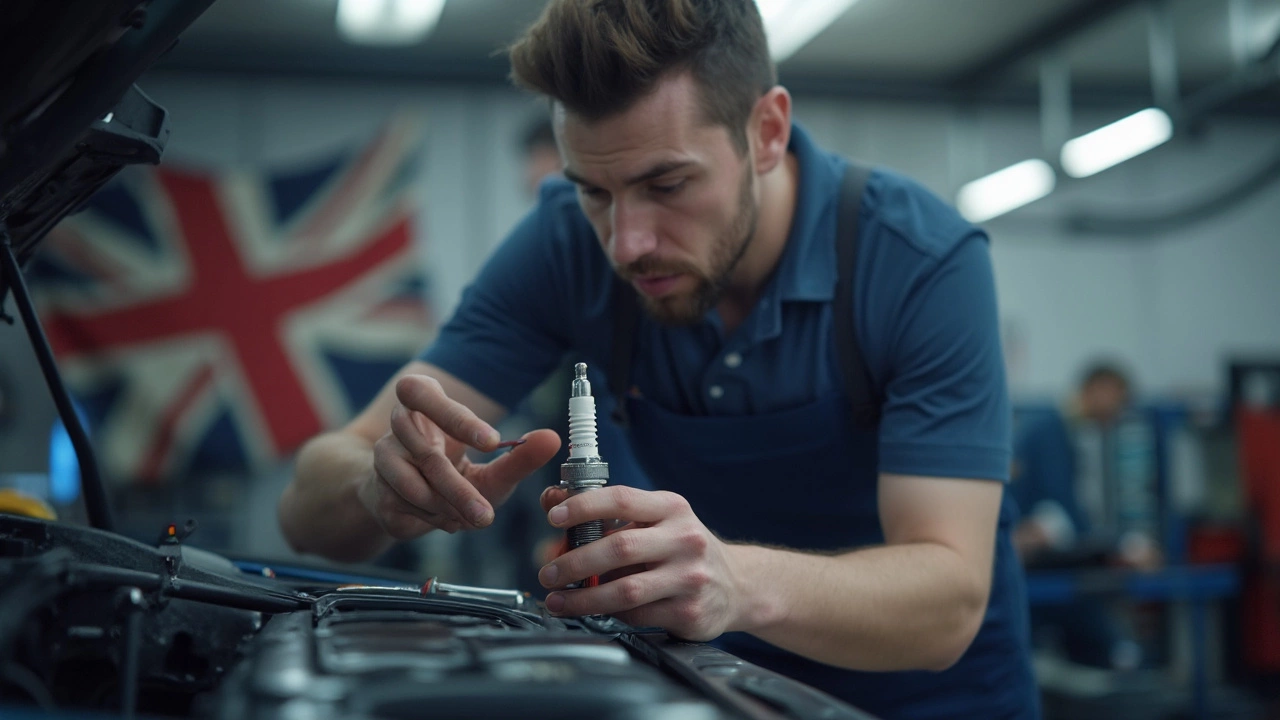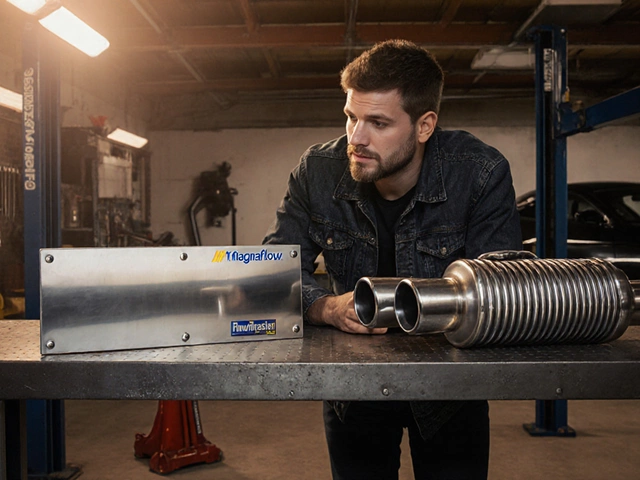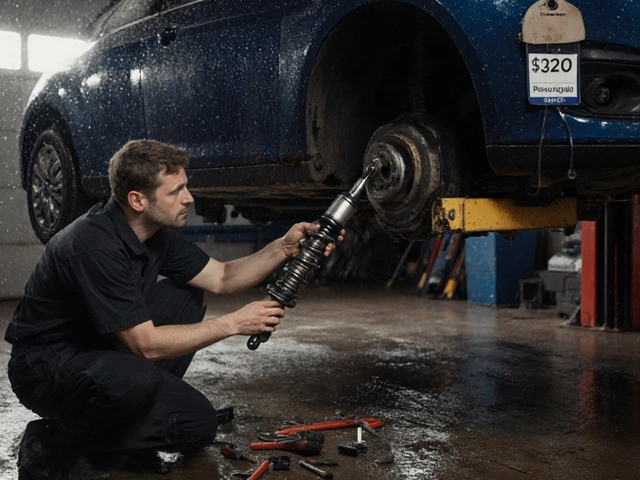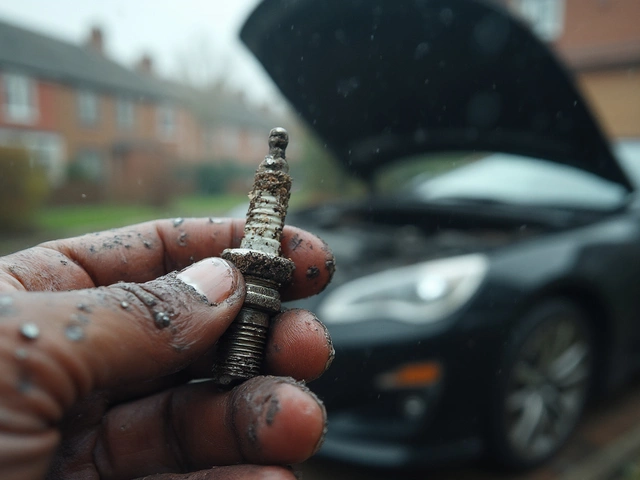Ever felt like your car's just not driving the way it used to? Maybe it stutters when you step on the gas or just seems a bit sluggish. These could be signs that your spark plugs are tired and need a change. Now, you might be wondering if it’s really worth changing something so small, but here’s the thing: spark plugs are actually big players in your engine’s performance game.
Think of spark plugs as tiny fire-starters in your engine. Without them, your car wouldn't even start! They're the ones igniting the air-fuel mixture in the engine cylinders, making sure your car runs smoothly. As time goes by, these little guys wear out. When they do, your engine might start acting up, not giving you the power you’re used to, or gulping more fuel than necessary, which isn’t great for your budget or the planet.
- The Role of Spark Plugs in Your Car
- Signs It's Time for a Change
- Benefits of Replacing Old Spark Plugs
- How Often Should You Change Them?
- Choosing the Right Spark Plugs
- Tips for DIY Replacement and When to Call a Pro
The Role of Spark Plugs in Your Car
Imagine the spark plug as the unsung hero of your car’s engine. These little gadgets might be small, but they pack a serious punch when it comes to keeping your car running smoothly. Here’s the scoop: spark plugs create a spark of electricity that ignites the air-fuel mixture, which makes your engine go vroom-vroom.
Without this spark, your car isn’t going anywhere. It's like trying to barbecue with no lighter. The moment you turn your key or push that start button, your spark plugs spring into action, firing up the engine's cylinders. And they do this over and over at a super-fast pace while you’re driving.
"The efficiency of your vehicle’s engine, fuel consumption, and emissions control start with healthy spark plugs," says Alex Garcia, a seasoned auto mechanic at FixitUp Garage.
Spark plugs have a ripple effect on several aspects of your car’s performance. They influence everything from engine power to fuel efficiency. In fact, dull or worn-out spark plugs can cause your car to become a bit of a gas guzzler, ultimately draining both performance and your wallet.
Let’s break it down with a few key points:
- Engine Performance: Good spark plugs ensure that your engine runs smoothly. Bad plugs can lead to misfires, stalling, or difficulty starting.
- Fuel Efficiency: Fresh plugs help your engine run more efficiently, which means you get more miles per gallon.
- Emissions: Replacing old spark plugs helps reduce harmful emissions, which is better for the environment and might just help you pass that emissions test.
The amazing thing is, something as small and inexpensive as a spark plug can have such a profound impact on your car’s overall health. Regularly changing your spark plugs can save you from unexpected breakdowns and keeps your car purring like a kitten, not roaring like a disgruntled old lion.
Signs It's Time for a Change
So, how do you know when it’s time to swap those spark plugs? There are a few telltale signs that your car might be giving up in the spark plug department.
First up, if your car is having trouble starting, that's a big red flag. Those plugs might be worn out and not providing the spark needed to get things going. And if the engine is already running, but you're noticing it misfiring or dying unexpectedly, it could also point to a faulty spark plug.
Have you noticed a drop in engine performance? If your car feels like it's lost some of its oomph, especially when climbing hills or accelerating, weak or failing spark plugs might be the culprits behind this sudden power drain.
Another indicator is reduced fuel efficiency. When spark plugs aren't firing properly, your engine isn’t burning fuel efficiently, which means you're stopping for gas more often than usual. Not fun for your wallet!
Finally, be on the lookout for unusual sounds, like rattling or pinging noises. These can indicate your spark plugs are doing a poor job, interacting with the combustion process.
- Difficulty starting the car: Sign of a weak spark.
- Engine misfires or stalls: Can be caused by faulty plugs.
- Lack of power: Noticeable especially when accelerating.
- Poor fuel economy: More trips to the pump and lighter wallet.
- Strange noises: Rattling or pinging while driving.
If your car is hinting at any of these issues, it might be time to consider checking those spark plugs. Sometimes just a quick replacement can work wonders and get everything purring smoothly again.
Benefits of Replacing Old Spark Plugs
You might not think about them every day, but your spark plugs are crucial for keeping your car in tip-top shape. If they're old and worn out, swapping them for new ones can really boost your car's performance and even save you some cash in the long run. Here’s why it’s worth doing.
1. Better Fuel Efficiency: Old spark plugs can make your engine run less efficiently, meaning your car might guzzle more gas than it should. With fresh spark plugs, you can help your engine burn fuel more effectively, which could mean fewer stops at the gas station.
2. Smoother Starts: Ever had your car struggle to start on a cold morning? It’s frustrating, right? New spark plugs can help ensure a smooth start because they provide a reliable spark to kick things off, reducing those annoying misfires.
3. Improved Engine Performance: When spark plugs are in good shape, they make sure your engine runs better. It might not turn your car into a race car, but you should notice a nice boost in acceleration and overall smoothness.
4. Lower Emissions: Everyone wants to do their part for the environment, and replacing your spark plugs can help. Properly functioning spark plugs reduce your engine's emissions, resulting in a cleaner air output.
- Fuel Efficiency Gain: Replacing spark plugs can improve your fuel economy by up to 30%.
- Frequency of Replacement: Generally, you should aim to replace them every 30,000 to 90,000 miles, depending on your car’s make and model.
It might sound clichéd, but think of spark plug replacement as an investment in your car's health rather than a chore. The improved performance, better mileage, and reduced emissions make it a no-brainer for most vehicle owners. So, if you want to revitalize your ride, start with the spark plugs!

How Often Should You Change Them?
Wondering how often you should swap out those spark plugs? The truth is, it can vary based on a few factors like the type of spark plug, the car model, and your driving habits. Most cars get along fine with a spark plug change every 30,000 to 50,000 miles. But before setting a date on your calendar, it's always a good idea to peek into your car's owner manual. You know that thick book gathering dust in your glove compartment? It usually has some solid advice specific to your vehicle.
Different types of spark plugs have different lifespans. Copper plugs, for example, might only last up to 20,000 miles while platinum and iridium varieties can stretch much longer, even up to 60,000 miles or more. If you’re going for longevity and reliability, those might be worth the investment.
Besides mileage, keep an eye out for warning signs your car might throw at you. If you're noticing poor acceleration, starting issues, or higher fuel consumption, these could all be red flags that it's time for a spark plug check-up.
- Check your mileage since the last replacement and compare it with your car's manual.
- Consider upgrading to longer-lasting spark plugs if you haven't already.
- Be alert to any performance changes in your vehicle.
| Type of Spark Plug | Expected Lifespan (Miles) |
|---|---|
| Copper | 20,000 |
| Platinum | 30,000 - 60,000 |
| Iridium | 40,000 - 60,000+ |
While these guidelines are a handy starting point, always listen to your car. After all, small components like spark plugs pack a punch in keeping that engine purring smoothly.
Choosing the Right Spark Plugs
Picking the right spark plugs for your car isn't just about finding something that fits. It's about ensuring those little guys can handle the job day in and day out. Different engines need different spark plugs, so let's break it down a bit.
First up, you’ll want to check your car's manual. The manufacturer always knows best, and they usually specify the type that's ideal for your ride. You might see terms like copper, platinum, or iridium thrown around. Here’s a quick rundown: copper plugs are great for older engines, but they wear out faster. Platinum ones last longer, while iridium, though a bit pricier, offers durability and consistent performance.
If you're looking for improved fuel efficiency or a bit more power, consider going for premium plugs. These can spark a bit hotter and give you better combustion. This means smoother starts and maybe even a little extra pep when you hit the gas.
Another thing to note is the heat range. Sounds technical, but really, it just means how well a plug can handle the engine's temperature. Too hot or too cold, and your engine’s not happy. Again, your car manual usually has this info.
For those of you who love data, a nifty checklist might help:
- Check the car manual for recommended types.
- Consider your driving habits (sports driving vs. casual cruising).
- Opt for iridium for longevity if those replacement tasks aren't your thing.
Being armed with the right spark plugs can make all the difference. It’s not just about firing up your engine; it's about doing so efficiently and effectively.
Tips for DIY Replacement and When to Call a Pro
So, you've decided you're ready to tackle replacing those spark plugs yourself. Awesome! Replacing spark plugs isn't as daunting as it seems. All you need is some patience and the right tools. Here's a step-by-step guide to get you started:
- Gather Your Tools: You'll need a socket wrench, a spark plug socket, and a gap gauge. Don’t forget the new spark plugs that match your car's specifications.
- Let the Engine Cool: Seriously, working on a hot engine can be a recipe for ouchies. Give it a good half-hour to cool down before you start.
- Locate the Spark Plugs: Check your car's manual. Usually, they’re right under the ignition coils.
- Remove the Old Plugs: Using your wrench, carefully take out each plug. Don’t apply too much force; it should come out smoothly.
- Check the Gaps: Use the gap gauge to ensure your new plugs have the right gap. A small gap means an efficient spark.
- Install the New Plugs: Screw them in gently by hand first, then tighten with the wrench snugly, not too tight.
While doing it yourself can save money and give you some bragging rights, sometimes it might be smarter to call a pro. Here are a few signs:
- The plugs are too corroded or damaged.
- You notice oil or coolant leaks around the plugs.
- The engine's misfiring even after you changed the plugs.
If anything feels off while you’re working, it might be best to let a mechanic take over. After all, keeping your car in top shape is the main goal, right?
Remember, ignoring issues with your spark plugs can lead to bigger problems down the road. So whether you DIY or opt for professional help, giving those plugs attention now can save you headaches (and dollars) later.




